Rip currents & other swimming hazards
Landes beaches are a great place for swimming and other activities but please be aware of local specificities to avoid accidents.
Everything you need to know about baïnes
What is a baïne ?
One very common phenomenon along the Landes coastline is the formation of baïnes, which are deep depressions that occur near sandbanks and in which currents form. These currents mostly occur between mid and low tide and can sweep careless swimmers and surfers out to sea, making it difficult for them to return to the beach.
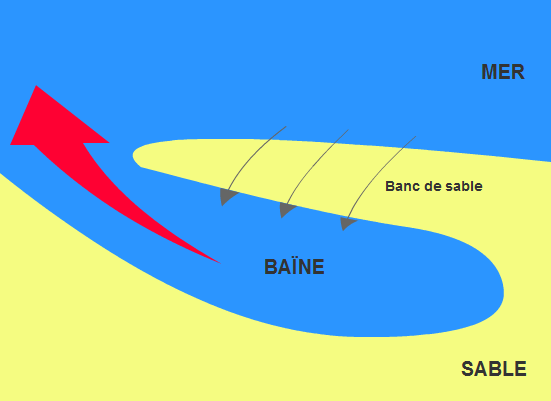
How are baïnes formed ?
The formation of baïnes occurs in the sea where there are strong tides, fine sand and a very low gradient. At high tide, the backwash caused by the waves swelling and crashing on the beach causes sandbanks to form, parallel to the beach. At high tide these sandbanks are underwater, but when the tide recedes, seawater is caught behind the sandbank. As it attempts to wash back, this water breaches the bank, forming a baïne current. As the tides come and go, the sandbank grows and the pool deepens, making the currents even stronger.
How to react to a baïne ?
What to do if you get carried away by a baïne current: Do not panic. Let yourself drift without fighting the current to avoid wasting energy. Call for help and swim parallel to the beach to escape the current, without fighting it.
All about Shore Break
What is a Shore Break ?
Shore breaks are waves that crash on the beach at high tide. The steep slope of Les Landes beaches at high tide accentuates this phenomenon. These waves are extremely swift and powerful since they are not slowed down by any obstacles before breaking on the sand.
There are two risks for swimmers. Firstly, they may be propelled violently against the sand, which can cause injury. Secondly, rip currents may be created, making it difficult for swimmers to return to the beach. These currents are less frequent than baïne currents.
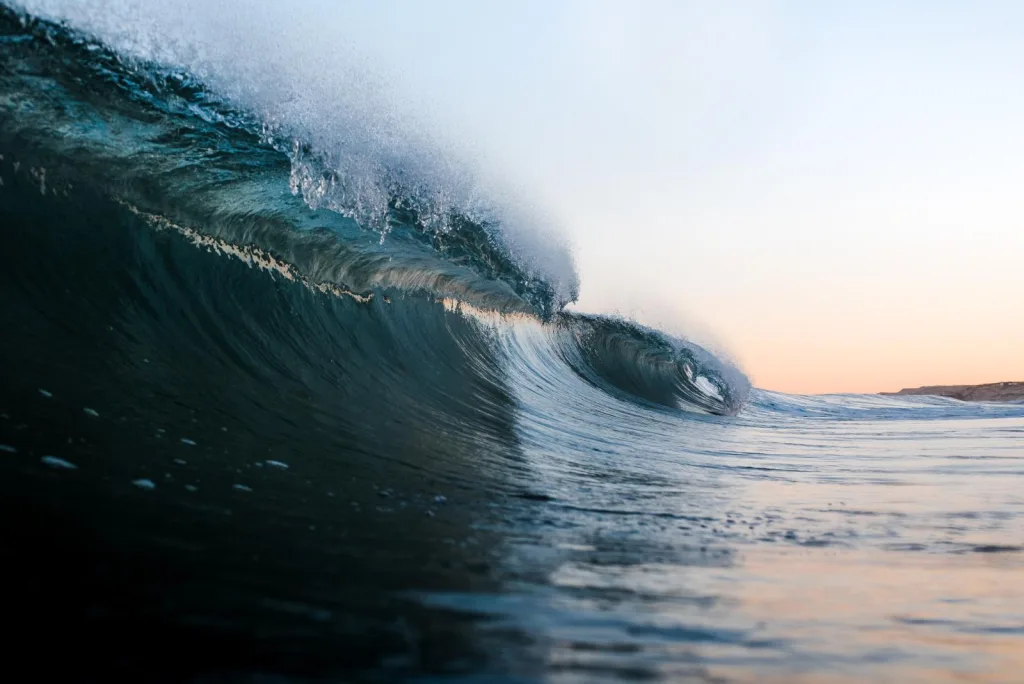
How to react to a shore break?
What to do if there are powerful shore breaks : do not turn your back to the waves, go under the waves and wait for a lull before going into or out of the water. In the event of difficulties, do not panic. Raise your arms and call for help; wait for a lull before leaving the water.
Learn all about other existing risks
Marine life: weever fish and jellyfish live along our coast and can cause problems. While their stings can be extremely painful, they are usually not dangerous.
Weever fish
These small fish hide in the sand and raise their dorsal fin to protect themselves. Their dorsal fin has one or several spines that inject venom into the feet of unfortunate beachgoers who step on them.
Their venom is thermolabile and dissipates with heat. If you get stung by a weever, it is best to walk on hot sand or place your foot in hot water (around 40°C). Do not use cigarettes or lighters, you may burn yourself!
On rare occasions, the sting may get infected. We recommend disinfecting the wound.
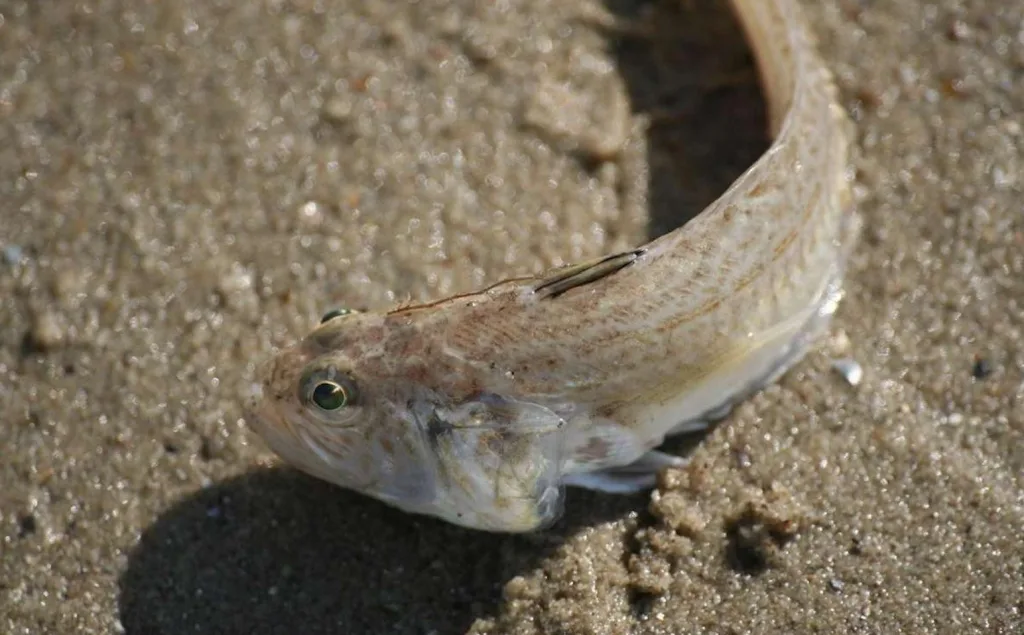
Jellyfish
Not all jellyfish are venomous. Their tentacles may cause pain similar to an electric shock or a burn. On rare occasions they may trigger an allergic reaction.
When stung by a jellyfish, carefully remove any tentacles still on the skin using sand and then rinse with saltwater. Freshwater will make the pain worse. A soothing cream from the lifeguards’ station or a pharmacy can also be applied. If the pain persists, consult a doctor.
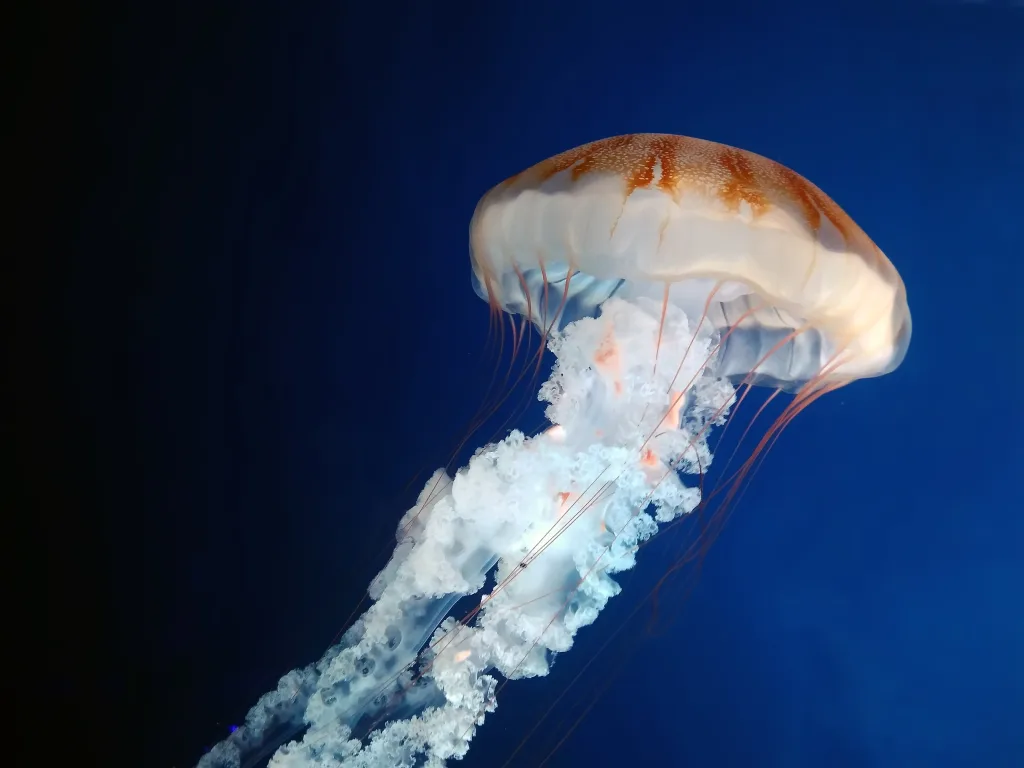
The risks in the Landes lakes
The lakes in the Landes region can also present certain dangers, mainly due to unexpected changes in depth and turbidity making it difficult to define the depth of the swimming area. In certain areas, there may also be water caltrops which can be painful when accidentally stepped on.
The Hossegor seawater lake is subject to the tides. Currents may form as the tide comes in and goes out.
For these reasons, there are sometimes yellow warning flags at certain lakes.
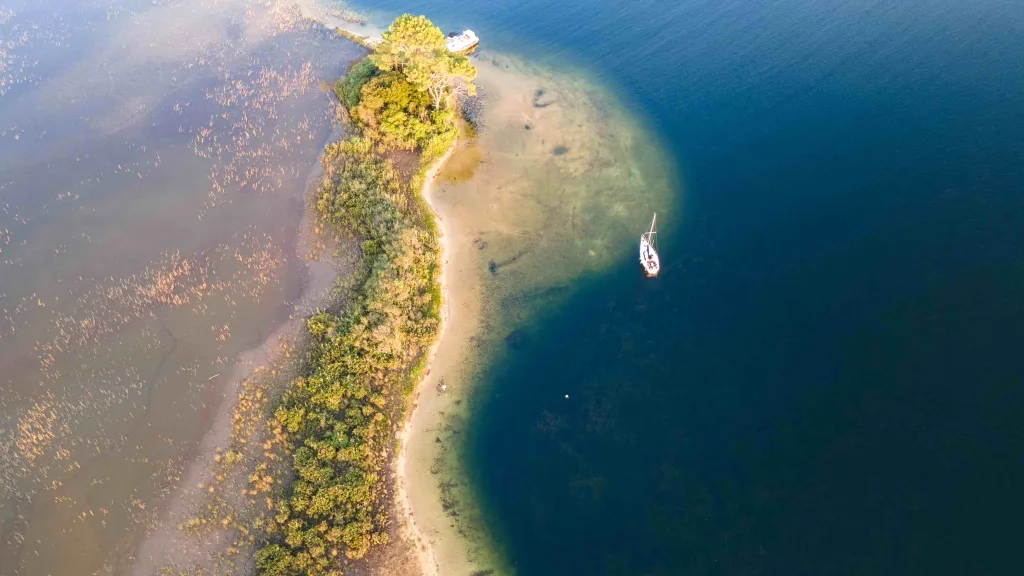
If you have any questions
Landes lifeguards survey the designated swimming areas and ensure they are located in the safest places. They are trained to intervene quickly in the event of difficulty. Please do not hesitate to ask them any questions, whether at the lifeguards’ station or on the beach, to find out about the local conditions and to enjoy our magnificent Landes beaches to the full.
During the Vis Ta Plage operation, they are also on hand to inform beachgoers about safety, specific dangers and how to protect the environment.